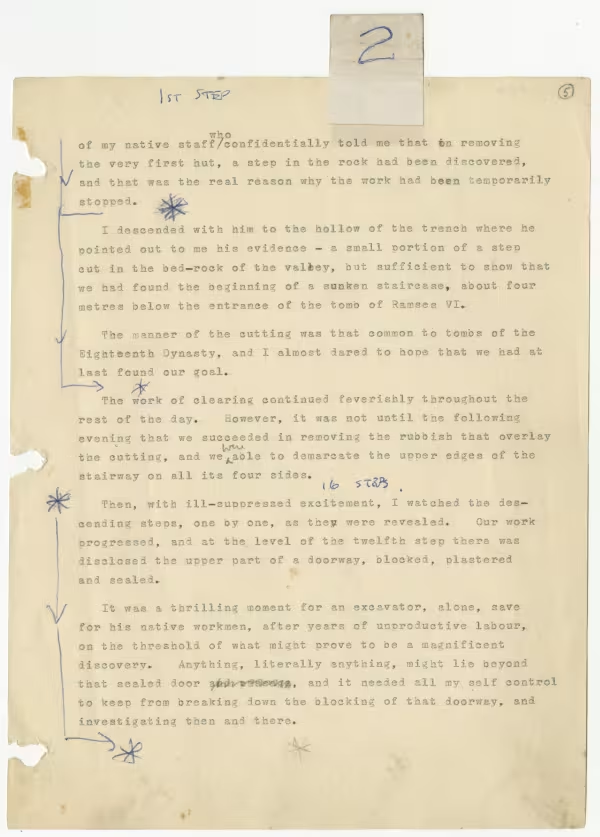TAA i.12.04

© Griffith Institute,
University of Oxford
(5)
<1ST Step>
of my native staff / <who> confidentially told me o/<i>n removing
the very first hut, a step in the rock had been discovered,
and that was the real reason why the work had been temporarily
stopped.
I descended with him to the hollow of the trench where he
pointed out to me his evidence – a small portion of a step
cut in the bed-rock of the vale<l>ey, but sufficient to show that
we had found the beginning of a sunken staircase, about four
metres below the entrance of the tomb of Ramses VI.
The manner of the cutting was that common to tombs of the
Eighteenth Dynasty, and I almost dared to hope that we had at
last found our goal.
The work of clearing continued feverishly throughout the
rest of the day. However, it was not until the following
evening that we succeeded in removing the rubbish that overlay
the cutting, and we <were> able to demarcate the upper edges of the
stairway on all its four sides.
<16 Steps>
Then, with ill-suppressed excitement, I watched the des-
cending steps, one by one, as theu/<y> were revealed. Our work
progressed, and at the level of the twelfth step there was
disclosed the upper part of a doorway, blocked, plastered
and sealed.
It was a thrilling moment for an excavator, alone, save
for his native workmen, after years of unproductive labour,
on the threshold of what might prove to be a magnificent
discovery. Anything, literally anything, might lie beyond
that sealed door and passage, and it needed all my self control
to keep from breaking down the blocking of that doorway, and
investigating then and there.